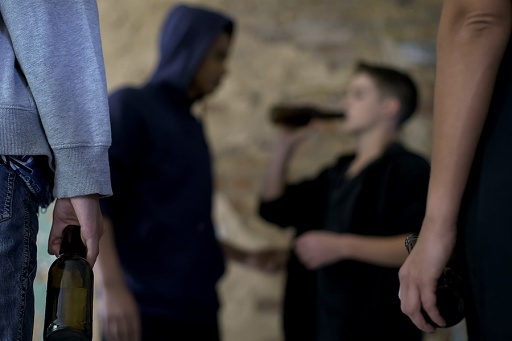
School of Nursing researchers will explore how to address disparities in alcohol and drug abuse among sexual minority youth, thanks to a five-year, $2.5 million grant from the National Institute on Alcohol Abuse and Alcoholism (NIAAA).
The federal research grant awarded for “Peer Victimization and Risky Alcohol Abuse Among Sexual Minority Youth” allows nursing professors Amy Hequembourg and Jennifer Livingston to study the daily and longer-term effects of peer victimization on risky alcohol use among lesbian, gay, bisexual, questioning and other non-heteronormative (LGBTQ+) young people.
Crucial as a means to inform future prevention efforts, their research also will identify protective factors that prevent some LGBTQ+ youth from engaging in risky health behaviors.
“LGBTQ+ youth have earlier onset and higher rates of alcohol and other substance use compared with heterosexual adolescents,” says Hequembourg, associate professor of nursing, whose research focuses on understanding why sexual and gender minorities are at risk for experiencing adverse health outcomes.
“Early and intensive involvement in substance use can precipitate the development of substance abuse problems across the lifespan, making it an important public health issue,” says Livingston, associate professor and co-principal investigator, whose research focuses on the role of peer victimization in the development of adolescent substance use.
High rates of risky alcohol use and related problems among LGTB adults are well-documented by UB researchers and others, contributing to current health disparities. Pathways through which LGBTQ+ youth develop high-risk alcohol use behaviors are not well understood, creating obstacles to developing ways to intervene and prevent these behaviors, according to Livingston.
“Mixed methods studies are vitally needed to understand the pathways, processes and contexts through which LGBTQ+ adolescents become involved in early and high-risk alcohol use,” she says, “and to inform the development of primary prevention programs that preserve the health of LGBTQ+ youth.”
An estimated 3 million LGBTQ+ adolescents live in the U.S., according to Hequembourg.
“Understanding these mechanisms associated with risky alcohol use in this population needs to be a public health priority,” she says.
The grant from NIAAA allows UB researchers to better study how early adverse experiences, particularly peer victimization, contribute to high risk health behaviors, specifically risky alcohol use, among LGBTQ+ youth.
“A mixed methods approach will be used to collect information about peer victimization experiences of LGBTQ+ youth to help us understand how sexual minority stressors, such as discrimination and harassment, uniquely contribute to health risk behaviors,” says Hequembourg.
Hequembourg, Livingston and their study team also will look to identify protective factors that help these vulnerable youth cope with peer victimization. Young people between 15 and 17 will be recruited from across the state to answer a wide range of questions about themselves and their daily lives. Assessments will include secure, online surveys, brief daily reports and interviews. Participants will include cisgender, transgender and gender non-conforming youth who identify as LGBTQ+, according to Hequembourg.
“The struggles of LGBTQ+ youth are widely publicized,” she says, “yet little research has examined the constellation of factors that contribute to health disparities among this population and pathways to improving health outcomes.”
Craig Colder, professor and director of graduate studies in the Department of Psychology, is co-investigator on the grant. A clinical psychologist, Colder has expertise in adolescent development and substance use. He specializes in advanced statistical modeling, which will enable the UB team to examine complex behavioral and developmental changes over time among participants.








